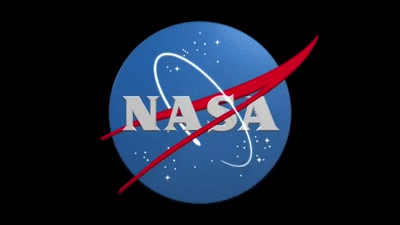An Adaptable Species: Part 2 Of 4 (Part 1) Episode 11: The Immortals, Cosmos: A SpaceTime Odyssey






An Adaptable Species: Part 2 of 4 (Part 1) Episode 11: The Immortals, Cosmos: A SpaceTime Odyssey
More Posts from Lanas-own-blog and Others

Buzz Aldrins self-portrait during Gemini 12 with the Earth reflecting off his visor, 12 November 1966
js

Vela Supernova Remnant : The plane of our Milky Way Galaxy runs through this complex and beautiful skyscape. At the northwestern edge of the constellation Vela the telescopic frame is over 10 degrees wide, centered on the brightest glowing filaments of the Vela Supernova Remnant, an expanding debris cloud from the death explosion of a massive star. Light from the supernova explosion that created the Vela remnant reached Earth about 11,000 years ago. In addition to the shocked filaments of glowing gas, the cosmic catastrophe also left behind an incredibly dense, rotating stellar core, the Vela Pulsar. Some 800 light-years distant, the Vela remnant is likely embedded in a larger and older supernova remnant, the Gum Nebula via NASA
js



Fill your void

NGC 5189.
Credit: NASA, ESA and The Hubble Heritage Team (STScI/AURA)






Geometry and symmetry in plants, part 2
See the full thread here
The NASA “Worm” Logo
Just like many organizations, the style and logos can change over time. You are probably most familiar with our “meatball” logo. No, unfortunately this does not refer to the delicious food. This logo (below) is our most popular symbol, and dates back to 1959.

But, we’ve also had other insignia that represented our organization throughout the years.
The “worm” logo (below) was used by the agency from 1975 until 1992. The organization wanted to create a more “modern” logo, which resulted in the unique type style of the “worm” logo.

Even though this logo was retired in 1992, the Graphics Standards Manual is still available online HERE.
You can also read up about the emblems, logos and insignia used by NASA throughout the years in a new e-Book available for free HERE.
Make sure to follow us on Tumblr for your regular dose of space:http://nasa.tumblr.com


Islamic Art
Most everyone is familiar with geometry and patterns. The above image by Richard Henry is included here to give some mathematical frame of reference. The artistic emphasis of these ideas gained prominence due to certain religious rules in Islamic religious texts forbidding the portrayal of human forms in worship. Additionally, the advanced mathematical discoveries in the middle east brought about some wonder toward the patterns of these ideas. The underlying message in such geometries, within the Islamic context, is the infinite and natural power of God. It is important to note that ideas like zero, our decimal counting system, and algebra originated from India and the middle east. Arabic calligraphy is also similarly celebrated and made the subject of many past and current Islamic art.

-
 cosmic-kiwi reblogged this · 11 months ago
cosmic-kiwi reblogged this · 11 months ago -
 ratak-monodosico reblogged this · 5 years ago
ratak-monodosico reblogged this · 5 years ago -
 spookyking reblogged this · 6 years ago
spookyking reblogged this · 6 years ago -
 spookyking liked this · 6 years ago
spookyking liked this · 6 years ago -
 creative-dragons-run-amok liked this · 6 years ago
creative-dragons-run-amok liked this · 6 years ago -
 simplygreenie liked this · 6 years ago
simplygreenie liked this · 6 years ago -
 acedragonphilosopher liked this · 6 years ago
acedragonphilosopher liked this · 6 years ago -
 alexanderreaderp liked this · 6 years ago
alexanderreaderp liked this · 6 years ago -
 sharry-potter liked this · 6 years ago
sharry-potter liked this · 6 years ago -
 genocider-syo-is-still-my-queen liked this · 6 years ago
genocider-syo-is-still-my-queen liked this · 6 years ago -
 eyzotic reblogged this · 6 years ago
eyzotic reblogged this · 6 years ago -
 eyzotic liked this · 6 years ago
eyzotic liked this · 6 years ago -
 byron4night liked this · 6 years ago
byron4night liked this · 6 years ago -
 sublimeshepherdnerdtaco-blog liked this · 6 years ago
sublimeshepherdnerdtaco-blog liked this · 6 years ago -
 ryderthefirst reblogged this · 6 years ago
ryderthefirst reblogged this · 6 years ago -
 iamdefinitelynotanalien liked this · 6 years ago
iamdefinitelynotanalien liked this · 6 years ago -
 zhugkp reblogged this · 6 years ago
zhugkp reblogged this · 6 years ago -
 jenna4fun24 liked this · 6 years ago
jenna4fun24 liked this · 6 years ago -
 zhugkp reblogged this · 6 years ago
zhugkp reblogged this · 6 years ago -
 zhugkp reblogged this · 6 years ago
zhugkp reblogged this · 6 years ago -
 beneaththemooon liked this · 7 years ago
beneaththemooon liked this · 7 years ago -
 ground-gears liked this · 7 years ago
ground-gears liked this · 7 years ago -
 alez-on-mars reblogged this · 7 years ago
alez-on-mars reblogged this · 7 years ago -
 alez-on-mars liked this · 7 years ago
alez-on-mars liked this · 7 years ago -
 avalisk liked this · 7 years ago
avalisk liked this · 7 years ago -
 jeremybrettfan reblogged this · 8 years ago
jeremybrettfan reblogged this · 8 years ago -
 jeremybrettfan liked this · 8 years ago
jeremybrettfan liked this · 8 years ago -
 thatgeeklover reblogged this · 8 years ago
thatgeeklover reblogged this · 8 years ago -
 pegflicker liked this · 8 years ago
pegflicker liked this · 8 years ago -
 7th-universe reblogged this · 8 years ago
7th-universe reblogged this · 8 years ago -
 localbread-blog liked this · 8 years ago
localbread-blog liked this · 8 years ago -
 sportschick4-blog1 liked this · 8 years ago
sportschick4-blog1 liked this · 8 years ago -
 xandr13 liked this · 8 years ago
xandr13 liked this · 8 years ago -
 tenebraarum liked this · 8 years ago
tenebraarum liked this · 8 years ago -
 welfarewarlock liked this · 8 years ago
welfarewarlock liked this · 8 years ago -
 frozendiamond85 liked this · 8 years ago
frozendiamond85 liked this · 8 years ago -
 leavesofmyuniverse liked this · 8 years ago
leavesofmyuniverse liked this · 8 years ago -
 saraphiels liked this · 8 years ago
saraphiels liked this · 8 years ago -
 gadridel reblogged this · 8 years ago
gadridel reblogged this · 8 years ago -
 gadridel liked this · 8 years ago
gadridel liked this · 8 years ago -
 moorehollandplz liked this · 8 years ago
moorehollandplz liked this · 8 years ago -
 nx-ked liked this · 8 years ago
nx-ked liked this · 8 years ago -
 veritascorpion liked this · 8 years ago
veritascorpion liked this · 8 years ago -
 everyday-im-hufflepuffing liked this · 8 years ago
everyday-im-hufflepuffing liked this · 8 years ago
I've had lots of blogs in the past, but this one I'm actualy excited to share with people.
68 posts